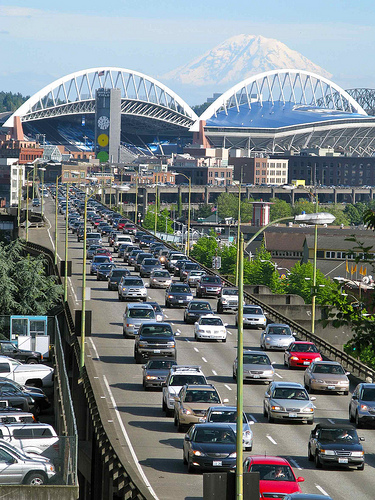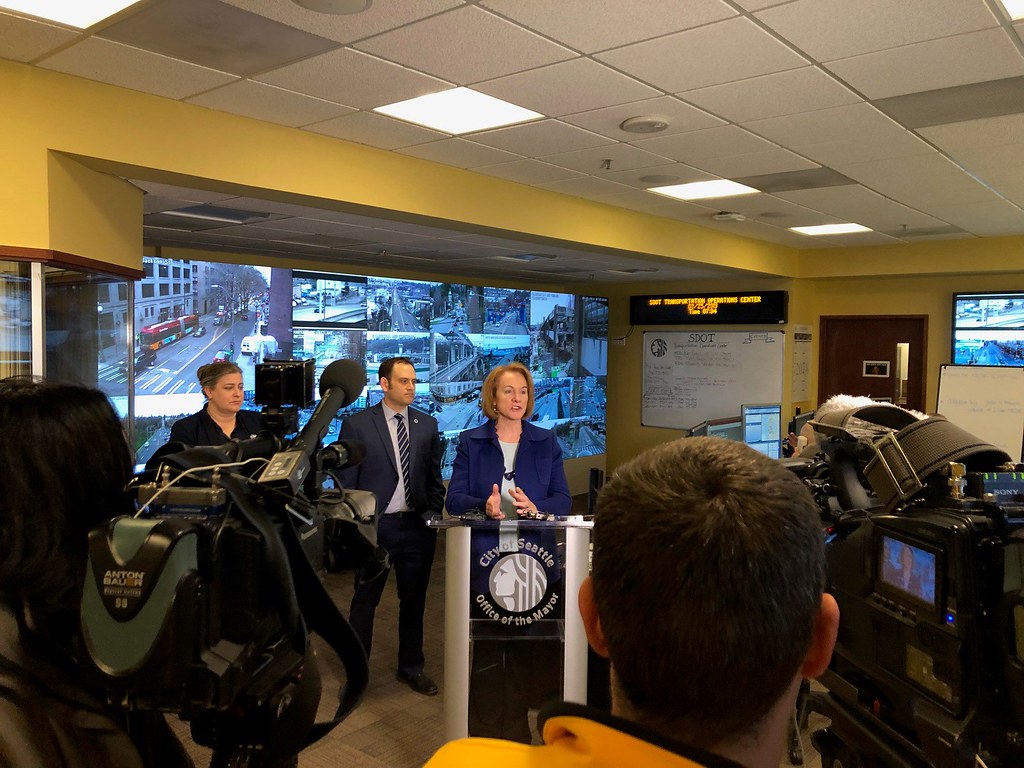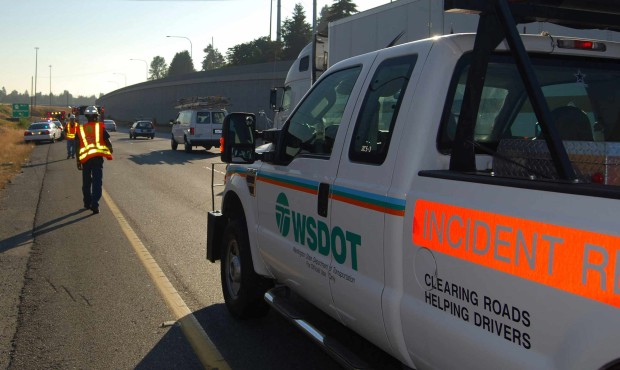Seattle Region’s Multi-Agency Partnership Aims To Deploy Cloud-Based Virtual Coordination Center For Increased Safety And Mobility
This article is a joint effort between the UW Mobility Innovation Center, CoSSaR and WSDOT
The Seattle area I-5 corridor is consistently ranked among the 10 worst North American traffic corridors for congestion. With a rapidly growing population, our transportation operators are seeking strategies to optimize existing roadways and systems. Beyond new technology, strong partnerships are necessary for agencies to communicate amongst each other and develop joint plans to mitigate the  impacts of rising roadway congestion — particularly during major roadway incidents.
impacts of rising roadway congestion — particularly during major roadway incidents.
Seattle’s rapid growth, unique geography and limited north/south routes make this area highly susceptible to incident related congestion. One notable example is the February 2017 propane tanker crash that closed both directions of I-5 and I-90 in downtown Seattle for nearly eight hours causing regional gridlock.
The crash highlighted that existing interagency communications protocols were not able to effectively manage a unified congestion management strategy for a complex incident like a tanker crash. As a result, external communications also suffered. Responding agencies were unable to get drivers to delay their commute home, and Seattle area traffic ground to a halt almost immediately as the afternoon commute began.
 Integrated corridor management is a complex, multi-agency responsibility involving state and local transportation agencies, transit providers and emergency responders. Siloed information systems and legacy communication channels currently limit effective, coordinated response. As a result, agencies are often waiting for information before they can act and have little insight into each other’s decisions. Meanwhile, the public can be confused by out-of-date or conflicting information, leading to frustration and further congestion.
Integrated corridor management is a complex, multi-agency responsibility involving state and local transportation agencies, transit providers and emergency responders. Siloed information systems and legacy communication channels currently limit effective, coordinated response. As a result, agencies are often waiting for information before they can act and have little insight into each other’s decisions. Meanwhile, the public can be confused by out-of-date or conflicting information, leading to frustration and further congestion.
Motivated by the critical need to maintain regional mobility and safety, executives from the Washington State Department of Transportation, Washington State Patrol, Seattle Department of Transportation, Seattle Police, Seattle Fire, and King County Metro Transit signed a charter establishing the Seattle Area Joint Operations Group in 2017. Over the last two years, these six agencies, joined by Sound Transit, have developed a shared vision of a common virtual work environment for regional mobility management called the Virtual Coordination Center (VCC).
The design and development of the VCC is a regional effort coordinated by the University of Washington’s Center for Collaborative Systems for Security, Safety and Regional Resilience (CoSSaR). When complete, the system will enable real-time data sharing and coordinated response to quickly clear major roadway incidents and reduce related congestion.
The cloud-based VCC will pull in real-time data from the multiple public agencies responsible for transportation management in the greater Seattle area. The data will be shared in a common dashboard that allows responders to see incidents as they happen, make more informed decisions, collaborate and coordinate response in real time and push out a unified public message.
This effort has received considerable private sector support from Challenge Seattle, a regional alliance of CEOs that seeks to bring stakeholders together to think creatively, take action, and champion bold solutions. Through their partnership with the University of Washington Mobility Innovation Center, Challenge Seattle has provided industry expertise, funding, and leadership to areas of the project that require employer participation and engagement.
 Regional coordination comes with several challenges and requires achieving a combination of trust, self-organization and shared vision among a wide range of diverse regional agencies, and then empowering those agencies to jointly own and carry out that vision. Monthly meetings strengthened connections between the partner agencies and led to the co-design of the VCC dashboard. The agencies are working to develop a shared Concept of Operations for incident response and congestion management, providing a comprehensive, detailed plan that will guide the technical build of the VCC.
Regional coordination comes with several challenges and requires achieving a combination of trust, self-organization and shared vision among a wide range of diverse regional agencies, and then empowering those agencies to jointly own and carry out that vision. Monthly meetings strengthened connections between the partner agencies and led to the co-design of the VCC dashboard. The agencies are working to develop a shared Concept of Operations for incident response and congestion management, providing a comprehensive, detailed plan that will guide the technical build of the VCC.
While the ongoing development of a common collaboration system is key, the development of regional partnerships in the Greater Seattle Area has been even more valuable. By increasing the efficiency and effectiveness of interagency operations during major incidents, the VCC will:
- Improve incident response by reducing communication delays, improving information flow, and leveraging the assets of all agencies. The VCC will enable coordinated agencies to more quickly, effectively, and safely clear major roadway incidents.
- Reduce congestion by improving interagency coordination congestion management strategies, such as quickly opening detour routes, prioritizing and rerouting transit and freight, coordinating with private sector for real time commute trip reduction, and providing the travelling public with actionable information. Provide continuous improvement by allowing agencies to leverage shared data to assess the effectiveness of response strategies and make future improvements.
- Improve safety by clearing roadways quickly, guiding first responders to incident sites more efficiently, and coordinating incident management operations
- Increase integrated management of mobility services by utilizing a robust regional concept of operations supported by shared data and a common working environment.
- Manage demand by providing more timely, accurate and actionable information to the public, freight carriers, businesses, and all who rely on the area’s transportation system
Learn More:
- Beyond Incident Management (Phase 1 Report)
- Co-Designing ‘The Cloud’ (Phase 2 Folio)
- Joint Incident Response in the Greater Seattle Area (Video)
- VCC Executive Summary (5-pager)